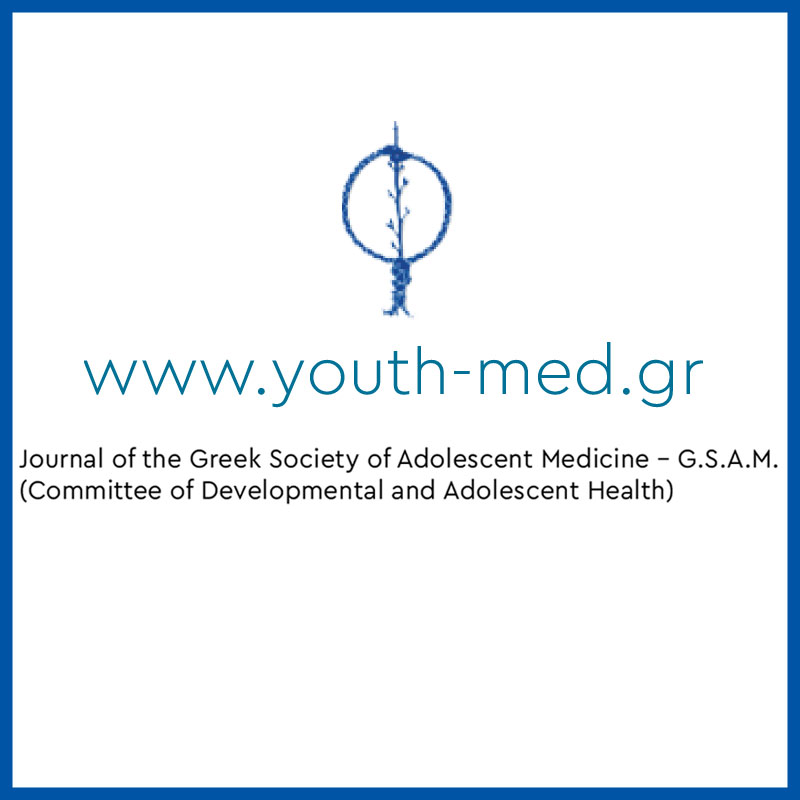Toxic Influencers on Social Media: Impact on Children and Adolescents. A Brief Review
Keywords:
toxic influencers, adolescents, children, social media, reviewAbstract
Abstract
As the advancement of technology increases, the use of social media by children and
teenagers is becoming more and more common. These young age groups tend to spend
their time interacting with online friends and seem to follow famous people, influenced
by the content on their screens. Influencers are people who have become widely known
through the promotion of themselves and their lifestyle on social media. They often work
with commercial companies aiming to influence users to consume the products they
promote. The negative effects of toxic influencers on children and adolescents are
widespread and widely accepted. This brief review demonstrates high rates of addictive
and risky behaviors, over-consumption patterns, eating disorders and negative body
image in children and adolescents due to the negative influence of content promoted by
toxic influencers on social media. In these circumstances, both scientists working with
the young population and parents should act as a shield against the risk of disruption to
children’s physical and mental health.
References
Lajnef K. The effect of social media influencers' on teenagers Behavior: an empirical study using cognitive map technique. Current Psychology. 2023; 1-14. doi:10.1007/s12144-023-04273-1
Freberga Κ, Grahamb Κ, McGaugheyc Κ, Frebergc LA. Who are the social media influencers? A study of public perceptions of personality. Public Relations Review. 2011; 37(1):90-92. doi:10.1016/j.pubrev.2010.11.001
Vrontis D, Makrides A, Christofi M, Thrassou A. Social media influencer marketing: A systematic review, integrative framework and future research agenda. International Journal of Consumer Studies. 2021; 45(4), 617-644. doi:10.1111/ijcs.12647
Μούκα ΜΔ. Ηγετικό και συναισθηματικό προφίλ των Ελλήνων Influencers στα social media: Παράγοντες επιρροής [Διπλωματική εργασία]. Αθήνα: Πάντειο Πανεπιστήμιο Κοινωνικών και Πολιτικών Επιστημών, 2020. Διαθέσιμο στο: http://pandemos.panteion.gr/index.php?op=record&lang=el&pid=iid:20315
Harrigan P, Daly TM, Coussement K, Lee JA, Soutar GN, Evers U. Identifying influencers on social media. International Journal of Information Management. 2021; 56, 102246. doi:10.1016/j.ijinfomgt.2020.102246
De Castro CA, O’Reilly I, Carthy A. Social media influencers (SMIs) in context: a literature review. Journal of marketing management. 2021; 9(2): 59-71. doi: 10.15640/jmm.v9n2a9
Vogel EA, Ramo DE, Rubinstein ML, Delucchi KL, Darrow SM, Costello C, Prochaska JJ. Effects of social media on Adolescents’ Willingness and Intention to Use E-Cigarettes: An Experimental Investigation. Nicotine & Tobacco Research. 2021; 23(4) 694-701. doi:10.1093/ntr/ntaa003
Kong G, Morean ME, Bold KW, Wu R, Bhatti H, Simon P, Krishnan-Sarin S. Dripping and Vape Tricks: Alternative E-cigarette Use Behaviors among Adolescents. Addict Behav. 2020; 107:106394. doi:10.1016/j.addbeh.2020.106394
Vassey J, Valente T, Barker J, Stanton C, Li D, Laestadius L, Cruz TB, Unger JB. E-cigarette brands and social media influencers on Instagram: a social network analysis. Population and Public Health Sciences. 2022; 0:1-8. doi:10.1136/tobaccocontrol-2021-057053
Hendriks H, Wilmsen D, Dalen W, Gebhardt WA. Picture Me Drinking: Alcohol-Related Posts by Instagram Influencers Popular Among Adolescents and Young Adults. Frontiers in Psychology. 2020; 10:2991.doi: 10.3389/fpsyg.2019.02991
Bagenal J, Zenone M, Maani N, Barbic S. Embracing the non-traditional: alcohol advertising on TikTok. BMJ Global Health. 2023; 8:e009954. doi:10.1136/ bmjgh-2022-009954
De Veirman M, Hudders L, Nelson MR. What Is Influencer Marketing and How Does It Target Children? A Review and Direction for Future Research. Frontiers in Psychology. 2019; 10:2685. doi: 10.3389/fpsyg.2019.02685
Balaban DC, Mucundorfeanu M, Mureșan LI. Adolescents’ Understanding of the Model of Sponsored Content of Social Media Influencer Instagram Stories. Media and Communication. 2022; 10(1):305-316. doi:10.17645/mac.v10i1.4652
Κότση Β. Με ποιους τρόπους το Instagram και οι influencers επηρεάζουν την αγοραστική απόφαση των νέων ηλικίας 18-29 στην Ελλάδα [Διπλωματική εργασία]. Κύπρος: Πανεπιστήμιο Νεάπολις Πάφου, 2022. Διαθέσιμο στο: http://hdl.handle.net/11728/12178
Lamba H, Bharadhwaj V, Vachher M, Agarwal D, Arora M, Sachdeva N, Kumaraguru P. From Camera to Deathbed: Understanding Dangerous Selfies on Social Media. Proceedings of the International AAAI Conference on Web and Social Media. 2017; 11(1):576-579. doi:10.1609/icwsm.v11i1.14956
Kurniawan Y, Habsari SK, Nurhaeni IDA. Selfie culture: Investigating the patterns and various expressions of dangerous selfies and the possibility of government’s intervention. The 2nd Journal of Government and Politics. 2013; 324.
Baghel N, Kumar Y, Nanda P, Shah RR, Mahata D, Zimmermann R. Kiki Kills: Identifying Dangerous Challenge Videos from Social Media. Association for the Advancement of Artificial Intelligence. 2018; doi:10.48550/arXiv.1812.00399
Deturo BL. The Virality of Horror Trends on Social Media [Doctoral dissertation]. MAPC: The University of Tampa, 2021. Available at: http://hdl.handle.net/20.500.11868/2096
Mc Carthy CM., de Vries R, Mackenbach JD. The influence of unhealthy food and beverage marketing through social media and advergaming on diet‐related outcomes in children—A systematic review. Obesity Reviews. 2022; 23(6), e13441. doi:10.1111/obr.13441
Korbani A, LaBrie J. Toxic TikTok trends. Journal of Student Research. 2021; 10(2). doi:10.47611/jsrhs.v10i2.1687
Logrieco G, Marchili MR., Roversi M, Villani A. The paradox of tik tok anti-pro-anorexia videos: How social media can promote non-suicidal self-injury and anorexia. International journal of environmental research and public health. 2021; 18(3):1041. doi:10.3390/ijerph18031041
Meyerding SG, Marpert JD. Modern pied pipers: Child social media influencers and junk food on YouTube: A study from Germany. Appetite. 2023; 181:106382. doi:10.1016/j.appet.2022.106382
Modrzejewska A, Czepczor-Bernat K, Modrzejewska J, Roszkowska A, Zembura M, Matusik P. # childhoodobesity-A brief literature review of the role of social media in body image shaping and eating patterns among children and adolescents. Frontiers in Pediatrics. 2022; 10:993460-993460.doi:10.3389/fped.2022.993460
Pedalino F, Camerini AL. Instagram use and body dissatisfaction: The mediating role of upward social comparison with peers and influencers among young females. International journal of environmental research and public health. 2022; 19(3):1543. doi:10.3390/ijerph19031543


